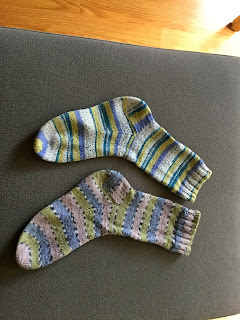 |
| The story of how dying basketball coach Brian Upson (right) coached the West Vancouver Highlanders to their first B.C. High School Basketball Championship in 1982 is part of West Vancouver lore. John was working as a photographer at the Province newspaper when he was assigned to cover the game, which happened to involve the team from his old high school. Here, he caught Upson congratulating player Paul Kitchener. |
 |
| The crowd assembles to watch a documentary, Longshot, about Upson made by film students at Rockridge secondary, a West Vancouver high school. |
 |
| John (right) reconnects with Pam Croll, who attended West Vancouver secondary at the same time as he did, in front of a montage of his photographs of the 1982 championship game. |
 |
| Mementoes from the legendary game displayed outside the theatre, located at West Vancouver secondary school. |
As the well-dressed crowds poured into a theatre at West Vancouver secondary school on Friday, I thought of how stories connect communities, and how everyone in that crowd was linked in some way to the tale we were about to hear. Through family, geography, or more likely, school, all those people who had spiffed up for the evening and were mounting the theatre steps had some connection to the bittersweet tale of Brian Upson's last hurrah.
Brian Upson was a top-notch basketball coach who taught at West Vancouver secondary school as far back as when John was a student there in the early 1960s. John didn't know him well, as his focus was soccer and track rather than basketball, but he was pulled into the Upson story long after he graduated.
He was a photographer for the
Province newspaper in 1982 when he was assigned to cover the B.C. High School Basketball Championships. The final game just happened to involve the West Vancouver Highlanders, the team from John's old high school, playing the Argyles, from North Vancouver.
The Highlanders had never won the championship, and the drama was enhanced by the fact that longtime coach Upson was dying of cancer. Due to his illness, he was co-coach by that time, but throughout the season, he'd pulled himself up from his sickbed to attend the team's games and practices. Now he was making his one final effort, and John made sure he photographed the gaunt Upson throughout. The drama exploded when the team performed the miracle of winning its first provincial championship before Upson's eyes. Two weeks after the game, he died.
The story of the dying coach and the Highlanders' 1982 win is a touchstone among old-time West Vancouverites, so when film students at Rockridge secondary (also in West Vancouver) decided to make a documentary about it, they had lots of cooperation and support. They interviewed Upson's family, friends, colleagues and team members; they reached out to John for his photographs.
So many people wanted to attend the film that two showings had to be scheduled. Many in the crowd were middle-aged and older -- the age of Upson's former students and colleagues. But the young were there too. This was their night, their film, and one of their number stood on stage and introduced it. As we watched, another generation of West Vancouverites was linking into the community story.
 |
| John in front of the theatre where the documentary was shown. It's at his old high school, West Vancouver secondary, but the theatre didn't exist when he attended in the 1960s. |
 |
| Inside the theatre, the crowd gathers before the film. |
 |
| A collection of John's photos from the game displayed outside the theatre. |






























































